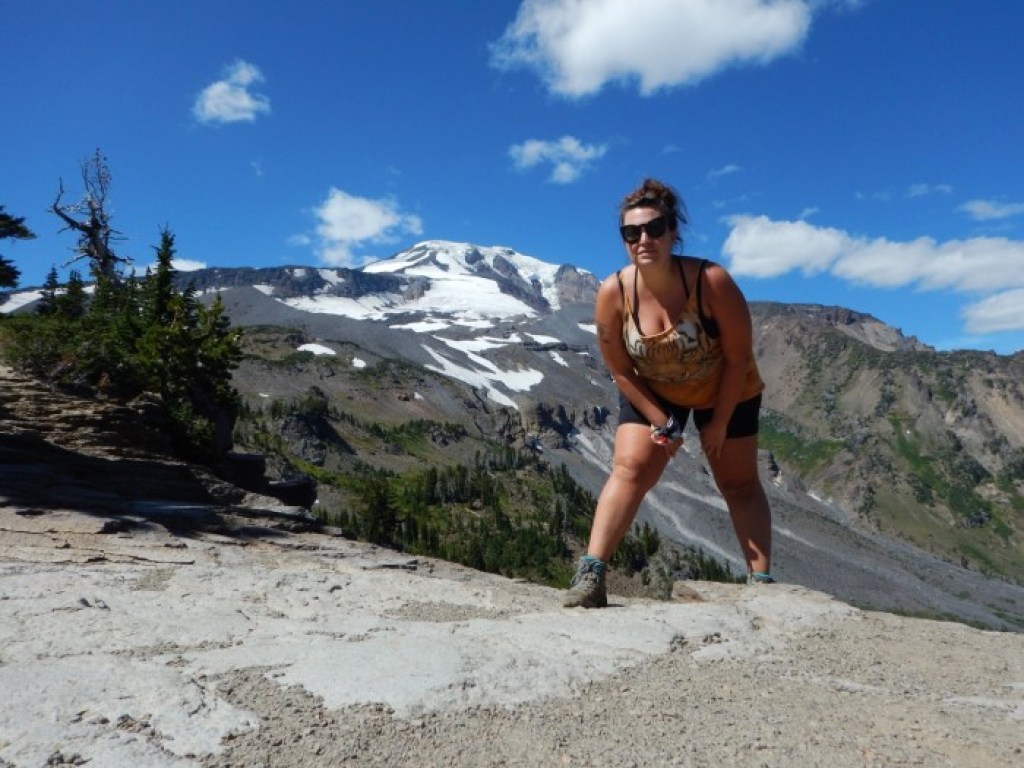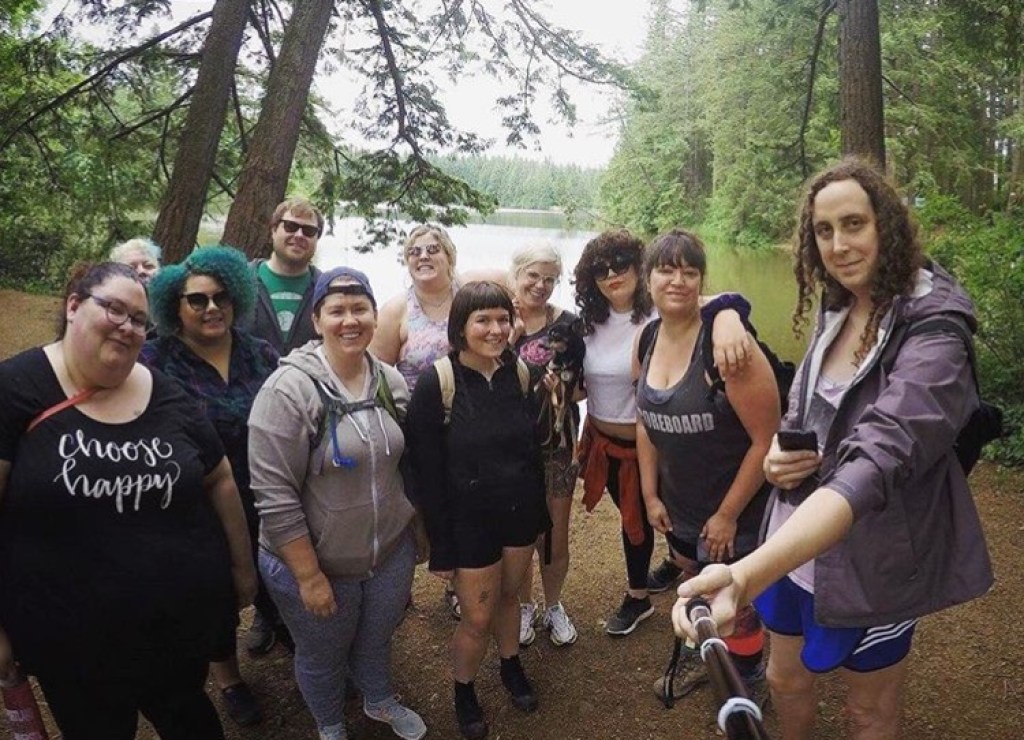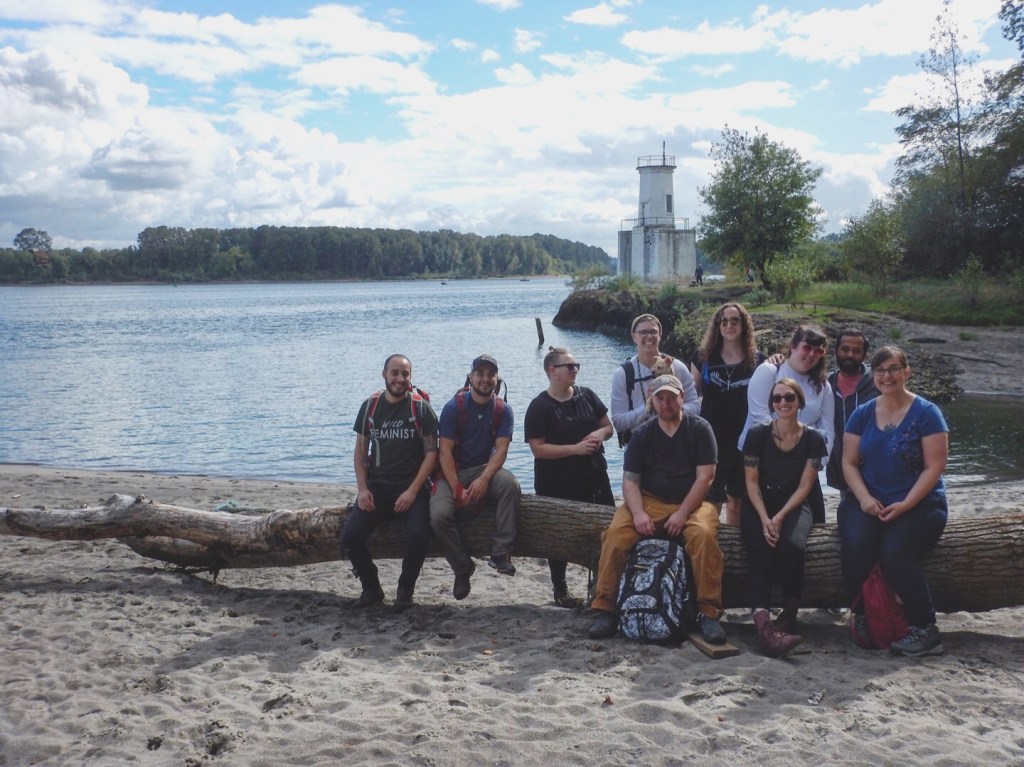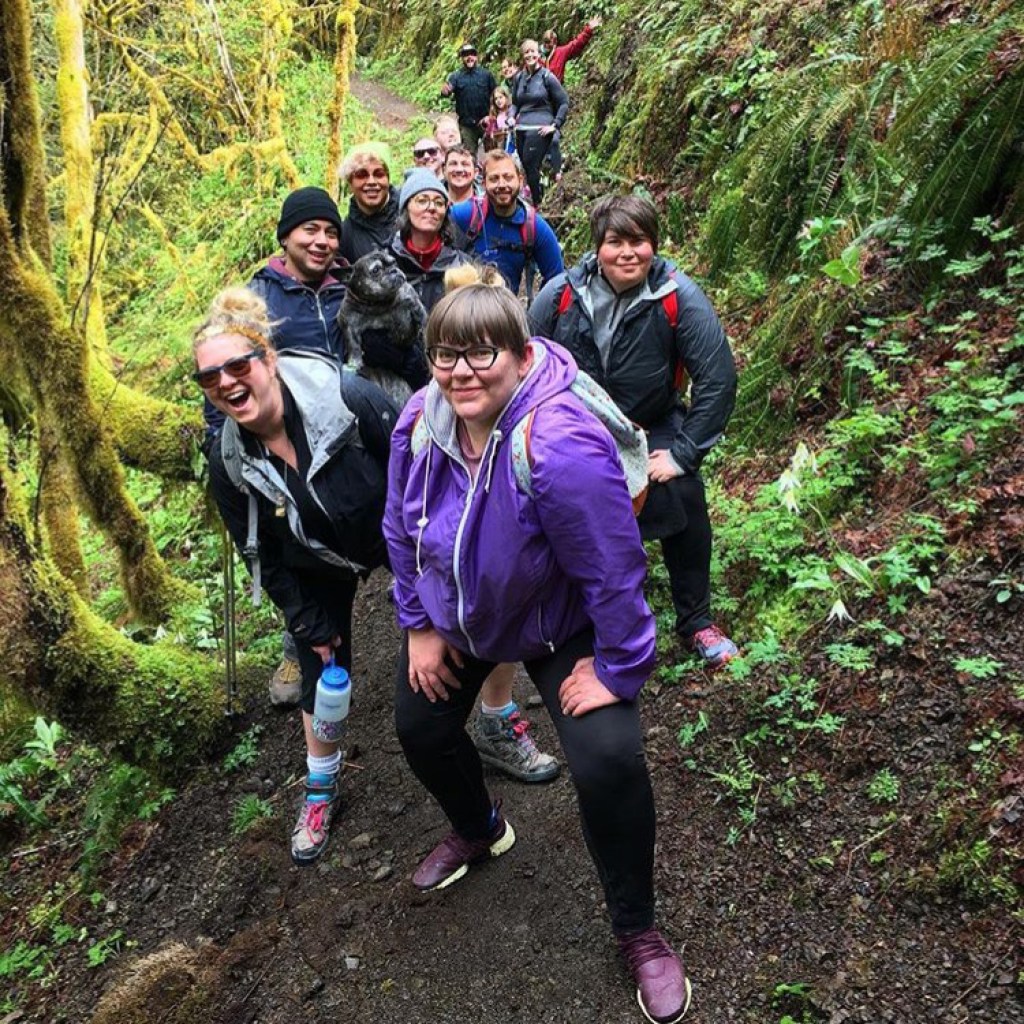Exploring the outdoors with a group, witnessing their reactions to the same things you’re seeing and engaging in teamwork paints a broader picture of what nature has to offer. Everyone’s success is somewhat reliant on each participant. This can be tremendously rewarding and build a strong outdoor community. However, it’s not all butterflies landing on noses and wildflower crowns (don’t pick the wildflowers!). The outdoors can be an intimidating place for someone who didn’t grow up spending time in nature. Communication and paying attention to group dynamics is key.
Every group hike is a learning experience for me, even when it goes “perfectly.” Especially because I don’t lead your average group. In 2015, I created an Instagram community called Unlikely Hikers, which features those often left out of the common outdoors narrative. This includes people of color, people of size, queer, trans and gender nonbinary folks, those with differing physical abilities and people living with mental health issues. Almost immediately after its creation, people started asking how they could participate in group hikes with the Unlikely Hikers community. The thing was, I’d never actually been on one.
Some of us possess identities not often reflected in the outdoors and outdoors media, which can lead to feelings of not being safe. Being a fat, queer woman, I never saw people like me in outdoors imagery. Riding my bike around the block a couple of times before parking myself in front of the television or crashing through waves twice as tall as me on the shores of San Diego was as outdoorsy as it got. About six years ago, a first date became a first hike, leading to an unlikely discovery: I liked hiking. I then spent much of my free time, mostly alone, trying to find out what hiking had to teach me. It changed my self-perception and physical abilities, improved my mental and physical health. It changed everything.

Jenny Bruso on Mount Adams (Photo Courtesy: Jenny Bruso)
For all the self-empowerment and positive life changes, hiking in a group terrified me. Being alone was a safeguard from the internalized garbage that happens in my head about being “The Slow One” or sweating too much and breathing too hard. However, as with any story I tell myself about what I do or don’t do based on fear or insecurity, this didn’t sit right with me. I joined a couple of group hikes, but they did very little to disprove my feelings. Being left behind when starting something as a group is disheartening and reinforces negative feelings. Always the self-questioning, curious creature, I was determined to create a positive group hiking experience.

Unlikely Hikers group hike in Lacamas Park, Washington, June 2017 (Photo Credit: Amie Freetly)
Last April, I led my first group hike with Unlikely Hikers in Portland, Oregon’s Forest Park. It was a successful first experience in terms of everyone having a great time and nothing bad happening, but the group splintered into three parts and I have found this to be an issue on almost all of the group hikes I’ve been on, not just ones hosted by me. The fast folks get caught up in personal conversations and forget to check on the group after about halfway. The middle group moves at an even pace but is occasionally confused about who’s ahead and who’s behind. And then there are the truly slow people who feel like they’re holding everything up—my people.
I’ve now hosted many group hikes and I want to share some of the things I’ve learned. I also want to remind you that no matter how much you prepare and do your best, things happen. You can’t control every variable. How you respond is what matters.

Sauvie Island, Oregon, October 2017 (Photo Credit: Jenny Bruso)
Group Hiking Tips
If you are leading a group hike:
- Figure out who your group is for. Beginners? Experienced hikers? Select a trail that’s appropriate. No group is for all hikers.
- Decide what you, as the leader, want from the group experience. How important is it for you to finish the trail?
- Be aware of microaggressions and group dynamics. Is anyone being left out?
- Have at least two leaders: one at the back, one at the front. The front lead navigates and keeps everyone aware of the group. The back lead keeps their eye on everyone and gauges the body language of slower hikers. If someone needs to turn around, the second leader could also split off with that hiker.
- Water crossings, rocky scrambles and weather conditions should be clearly stated on online invitations.
- Do every trail once prior to the group hike even if you’ve done it before. You want to make sure there are no new variables to account for, like landslides, high water or tree blowdowns.
- Have a first-aid kit, find out whether there is cell reception and locate access/egress routes.
- Be ready to make decisions for others, in their best interests, when they can’t do so themselves, including calling for help.
- Have hikers sign a release form acknowledging only they know their body and they’ve been well-informed about the trail, excusing you from liability should they become sick or injured.
- All leaders should bring extra water and snacks because there is always that one person…

Salmon River Trail, Oregon, May 2017 (Photo Credit: Jenny Bruso)
Split happens. Keep the group together:
- Emphasize the importance of moving as a group. No hiker left behind! It increases support, community and teamwork. It keeps the vibe right.
- Take all breaks together.
- Should the group get disconnected, stop at all trail forks for the group to catch up.
- Make sure everyone knows how many people there are.
- Keep groups small, as they’re easier to manage, less disruptive to other hikers and create less impact on the land.
If you are participating in a group hike:
- It isn’t a race. No one loses. Everyone wins just by showing up.
- YOU ARE ON A TEAM. Empower yourself, do research and carry maps. The leaders are human, things might happen. Be ready to be a part of the solution.
- Know what you are capable of and communicate that to the group leader.
- Dehydration and deficient sugar and salt meltdowns are totally avoidable. Bring plenty of water and snacks.
- If someone is trying to help you, let them.
As always, Leave No Trace and carry The Ten Essentials.
